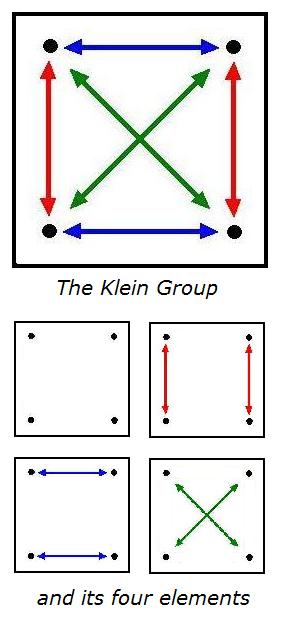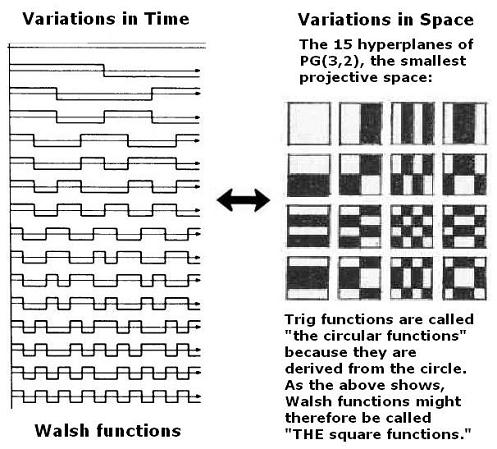Notes on Mathematics and Narrative
From the journal of Steven H. Cullinane,
March 13-19, 2009--
Entries in chronological order.
Friday, March 13, 2009 11:30 PM
ART WARS continued:
Rat Psychology
Lawrence Summers, former president of Harvard, home of the rat
psychology of Skinner
and Quine,
today offered a lesson in behavioral
economics.
From a transcript
of Summers's remarks (for a video, see the previous
entry)--
"An
abundance of greed and an absence of fear on Wall Street led some to
make purchases - not based on the real value of assets, but on the
faith that there would be another who would pay more for those assets.
At the same time, the government turned a blind eye to these practices
and their potential consequences for the economy as a whole. This is
how a bubble is born. And in these moments, greed begets greed. The
bubble grows.
Eventually, however, this process stops -
and reverses. Prices fall. People sell. Instead of an expectation of
new buyers, there is an expectation of new sellers. Greed gives way to
fear. And this fear begets fear.
This is the paradox at
the heart of the financial crisis. In the past few years, we've seen
too much greed and too little fear; too much spending and not enough
saving; too much borrowing and not enough worrying. Today, however, our
problem is exactly the opposite.
It is
this transition from an excess of greed to an excess of fear that
President Roosevelt had in mind when he famously observed that the only
thing we had to fear was fear itself. It is this transition that has
happened in the United States today."
Related material

Spatial Practice,
Paris-Style:

"Voids,
a Retrospective,"
an exhibit of empty rooms
that runs through March 23
at the Centre Pompidou
See also "Art
Humor"
and "Conceptual
Art."
Saturday, March 14, 2009 11:07 AM
Notes on Literature:
A Dante
for Our Times
"This could be Heaven
or this could be Hell."
-- "Hotel California"
Heaven --
 or --
or --
 Hell --
Hell --

Apparently from the back cover of
The Ninth Wave:
"Fear
+ hate = power was Mike Freesmith's formula for success. He first
tested it in high school when he seduced his English teacher and drove
a harmless drunk to suicide. He used it on the woman who paid his
way
through college. He used it to put his candidate in the
governor's
chair, and to make himself the most ruthless, powerful kingmaker in
American politics."
Don't forget greed. See yesterday's
Friday
the 13th entries.
Saturday, March 14, 2009 2:02 PM
Annals of Scholarship:
|
On Time
(in Mathematics and Literature)
"...
I want to spend these twenty minutes savoring, and working up, the real
complexity of the metaphorical relationship of time and distance-- to
defamiliarize it for us. And then I will give a few examples of how
imaginative literature makes use of the inherent strangeness in this
relationship:
Time ↔ Distance.
And
finally I will offer my opinion (which I think must be everyone’s
opinion) about why we derive significant-- but not total-- comfort from
this equation."
-- Barry Mazur, March 8, 2009, draft (pdf)
of talk for conference on comparative literature*
|
* American Comparative Literature
Association (ACLA) annual
meeting, March 26-29, 2009, at Harvard. Mazur's talk is scheduled for March 28.
Sunday, March 15, 2009 11:00 AM
Ides of March Sermon:
Angels, Demons,
"Symbology"
"On
Monday morning, 9 March, after visiting the Mayor of Rome and the
Municipal Council on the Capitoline Hill, the Holy Father spoke to the
Romans who gathered in the square outside the Senatorial Palace....
'...
a verse by Ovid, the great Latin poet, springs to mind. In one of his
elegies he encouraged the Romans of his time with these words:
"Perfer et obdura: multo graviora tulisti."
"Hold out and persist:
you have got through
far more difficult situations."
(Tristia, Liber V, Elegia XI, verse 7).'"
Dan Brown's novel Angels & Demons
introduced in the year 2000 the fictional academic discipline of
"symbology" and a fictional Harvard professor of that discipline,
Robert Langdon (named after ambigram*
artist John Langdon).

Tom Hanks as Robert Langdon
A possible source for Brown's term "symbology" is a 1995 web page, "The Rotation of
the Elements," by one "John Opsopaus." (Cf. Art
History Club.)
"The
four qualities are the key to understanding the rotation of the
elements and many other applications of the symbology of the four
elements." --John Opsopaus
* "...ambigrams were common in symbology...." --Angels & Demons
Sunday, March 15, 2009 5:24 PM
Philosophy and Poetry:
The Origin of Change
A note on the figure
from this morning's sermon:

"Two things of opposite natures seem to depend
On one another, as a man depends
On a woman, day on night, the imagined
On the real. This is the origin of change.
Winter and spring, cold copulars, embrace
And forth the particulars of rapture come."
-- Wallace Stevens,
"Notes Toward a Supreme Fiction,"
Canto IV of "It Must Change"
Monday, March 16, 2009 2:45 AM
The Particulars of Rapture:
(Cf. Sinatra's birthday,
2004)


This is, in turn, related to
Harvard's
Barry Mazur's
recent
essay on time in mathematics
and literature
(pdf).
L'Chaim.
Monday, March 16, 2009 12:00 PM
In a Nutshell:
Plato's Ghost
Monday, March 16, 2009 8:00 PM
Happy Birthday, Jerry Lewis:
Damnation Morning
continued
Annals of Prose Style
| |
Film Review
"No offense to either of them, but 'Georgia Rule' suggests an Ingmar
Bergman script as directed by Jerry Lewis. The subject matter is grim,
the relationships are gnarled, the worldview is bleak, and, at any
given moment, you suspect someone’s going to be hit with a pie." --John
Anderson at Variety.com, May 8, 2007
Sounds perfect to me. |
|
"Through
a Glass Darkly"
"Preserving
a strict unity of time and place, this stark tale of a young woman's
decline into insanity is set in a summer home on a holiday island. It
is the first part of the
trilogy
that comprises Winter
Light and The Silence,
films which are generally seen as addressing Bergman's increasing
disillusionment with the emotional coldness of his inherited Lutheran
religion. In particular here, Bergman focuses on the absence of
familial love which might perhaps have pulled Karin (Andersson)
back from the brink; while Karin's mental disintegration manifests
itself in the belief that God is a spider. As she slips inexorably into
madness, she is observed with terrifying objectivity by her emotionally
paralyzed father (Björnstrand)
and seemingly helpless husband (von Sydow)."
-- Nigel Floyd, Time Out, quoted at Bergmanorama
Related material:
1. The "spider" symbol of Fritz Leiber's short story "Damnation
Morning"--
2. The Illuminati Diamond
of Hollywood's "Angels
& Demons" (to open May 15), and
3. The following diagram by one "John
Opsopaus"--
Tuesday, March 17, 2009 11:07 AM
For St. Patrick's Day:
"The diagram above is from a ninth century manuscript of Apuleius'
commentary on Aristotle's Perihermaneias, probably one of the
oldest surviving pictures of the square."
-- Edward
Buckner at The
Logic Museum
From the webpage "Semiotics
for Beginners: Paradigmatic Analysis," by Daniel Chandler:
 The Semiotic Square
The Semiotic Square
"The structuralist semiotician Algirdas Greimas introduced the semiotic
square
(which he adapted from the 'logical square' of scholastic philosophy)
as a means of analysing paired concepts more fully (Greimas 1987,* xiv,
49). The semiotic square is intended to map the logical conjunctions
and disjunctions relating key semantic features in a text. Fredric
Jameson notes that 'the entire mechanism... is capable of generating at
least ten conceivable positions out of a rudimentary binary opposition'
(in Greimas 1987,* xiv). Whilst this suggests that the possibilities
for signification in a semiotic system are richer than the either/or
of binary logic, but that [sic] they are nevertheless subject to
'semiotic constraints' - 'deep
structures' providing basic axes of signification."
* Greimas, Algirdas (1987): On Meaning: Selected Writings in
Semiotic Theory (trans. Paul J Perron & Frank H Collins).
London: Frances Pinter
Another version
of the semiotic square:

Krauss says that her figure "is, of course, a Klein Group."
Here is a more explicit figure representing
the Klein group:

There is also the logical
diamond of
opposition --

A
semiotic (as opposed to logical)
diamond has been used to illustrate
remarks by Fredric Jameson, a
Marxist
literary theorist:
"Introduction
to Algirdas Greimas, Module on the Semiotic Square," by Dino
Felluga at Purdue University--
The semiotic square has proven to be an influential concept not only in
narrative theory but in the ideological criticism of Fredric
Jameson,
who uses the square as "a virtual map of conceptual closure, or better
still, of the closure of ideology itself" ("Foreword"* xv). (For more
on Jameson, see the [Purdue University] Jameson module on ideology.)
Greimas' schema is useful since it
illustrates the full complexity of
any given semantic term (seme). Greimas points out that any given seme
entails its opposite or "contrary." "Life" (s1) for example
is understood in relation to its contrary, "death" (s2).
Rather than rest at this simple binary opposition (S), however, Greimas
points out that the opposition, "life" and "death," suggests what
Greimas terms a contradictory pair (-S), i.e., "not-life" (-s1)
and "not-death" (-s2). We would therefore be left with the
following semiotic square (Fig. 1):

As Jameson explains in the Foreword to Greimas'
On Meaning, "-s1 and -s2"—which
in this example are taken up by "not-death" and "not-life"—"are the
simple negatives of the two dominant terms, but include far more than
either: thus 'nonwhite' includes more than 'black,' 'nonmale' more than
'female'" (xiv); in our example, not-life would include more than
merely death and not-death more than life.
* Jameson, Fredric. "Foreword." On Meaning:
Selected Writings in Semiotic Theory. By Algirdas Greimas. Trans.
Paul J. Perron and Frank H. Collins. Minneapolis: U of Minnesota P,
1976.
|
"The Game in the Ship cannot be approached as a
job, a vocation, a
career, or a recreation. To the contrary, it is Life and Death itself
at work there. In the Inner Game, we call the Game Dhum Welur,
the Mind of God."
-- The
Gameplayers of Zan, by M.A. Foster
"For every kind of vampire,
there is a kind of cross."
-- Thomas Pynchon,
Gravity's Rainbow
Crosses used by semioticians
to baffle their opponents
are illustrated above.
Some other kinds of crosses,
and another kind of opponent:
Monday,
July 11, 2005
Logos
for St. Benedict's Day
Click
on either of the logos below for religious meditations-- on the left, a
Jewish meditation from the Conference of Catholic Bishops; on the
right, an Aryan meditation from Stormfront.org.
 
Both logos represent different embodiments of the
"story theory" of truth,
as opposed to the "diamond
theory" of truth. Both logos claim, in their own ways, to
represent the eternal Logos
of the Christian religion. I personally prefer the "diamond
theory" of truth, represented by the logo below.

See also the previous entry
(below) and the entries
of 7/11,
2003.
Sunday, July 10, 2005
| From Artemiadis's website: |
| 1986: |
Elected Regular Member
of the Academy of Athens |
| 1999: |
Vice President
of the Academy of Athens |
| 2000: |
President
of the Academy of Athens |

"First of all, I'd like to
thank the Academy..."
-- Remark attributed to Plato
|
Wednesday, March 18, 2009 9:00 AM
Mathematics and Narrative, continued:
Gallic Clarity
Yesterday's entry Deep
Structures
discussed the "semiotic square," a device that exemplifies the saying
"If you can't dazzle 'em with brilliance, then baffle 'em with
bullshit."
A search today for what the Marxist critic Fredric
Jameson might have meant by saying that the square "is capable of
generating at least ten conceivable positions out of a rudimentary
binary opposition" leads to two documents of interest.
1. "Theory Pictures as Trails: Diagrams and the Navigation of
Theoretical Narratives" (pdf),
by J.R. Osborn, Department of Communication, University of California,
San Diego (Cognitive Science Online, Vol.3.2, pp.15-44, 2005)
2. "The Semiotic Square" (html),
by Louis Hébert (2006), professor, Université du
Québec à Rimouski, in Signo (http://www.signosemio.com).
Shown below is Osborn's picture of the semiotic square:

Osborn's
discussion of the square, though more clear than, say, that of Rosalind
Krauss (who reverses the bottom two parts of the square-- see
Deep
Structures), fails. His Appendix A is miserably obscure.
On the brighter side, we have, as a sign that Gallic clarity still
exists, the work of Hébert.
Here is how
he approaches Jameson's oft-quoted, but seemingly
confused, remark about "ten conceivable positions"--
1. ABSTRACT
The
semiotic square, developed by Greimas and Rastier, is a means of
refining oppositional analyses by increasing the number of analytical
classes stemming from a given opposition from two (life/death, for
instance) to four (for example, life, death, life and death (the living
dead), and neither life nor death (angels)) to eight or even ten.
2. THEORY
The
actantial model, isotopy and the semiotic square are undoubtedly the
best-known theoretical propositions that have emerged from the Paris
School of semiotics, with Greimas as its central figure. Like the
actantial model and the veridictory square, the semiotic square is
designed to be both a conceptual network and a visual representation of
this network, usually depicted in the form of a "square" (which
actually looks like a rectangle!). Courtés defines it as the
visual
representation of the logical structure of an opposition (cf.
Courtés,
1991, 152). The semiotic square is a means of refining oppositional
analyses by increasing the number of analytical classes stemming from a
given opposition from two (for instance, life/death) to four (for
example, life, death, life and death (the living dead), and neither
life nor death (angels)) to eight or even ten. Here is an empty
semiotic square.
Structure of the semiotic square
| |
|
5. (=1+2) COMPLEX TERM
|
|
|
| |
| 1. TERM A |
|
2. TERM B
|
| |
9. (=1+4)
10. (=2+3)
|
|
| 3. TERM NOT-B |
|
4. TERM NOT-A
|
|
|
|
|
7. (=1+3)
POSITIVE DEIXIS
|
8. (=2+4) NEGATIVE DEIXIS
|
| |
|
| |
|
6. (=3+4) NEUTRAL TERM
|
|
|
LEGEND:
The + sign links the terms that are combined to make up a metaterm (a
compound term); for example, 5 is the result of combining 1 and 2.
2.1 CONSTITUENT ELEMENTS
The
semiotic square entails primarily the following elements (we are
steering clear of the constituent relationships of the square:
contrariety, contradiction, and complementarity or implication):
1. terms
2. metaterms (compound terms)
3. object(s) (classified on the square)
4. observing subject(s) (who do the classifying)
5. time (of the observation)
2.1.1 TERMS
The semiotic square is composed of four terms:
Position 1 (term A)
Position 2 (term B)
Position 3 (term not-B)
Position 4 (term not-A)
The
first two terms form the opposition (the contrary relationship) that is
the basis of the square, and the other two are obtained by negating
each term of the opposition.
2.1.2 METATERMS
The
semiotic square includes six metaterms. The metaterms are terms created
from the four simple terms. Some of the metaterms have been named. (The
complex term and the neutral term, despite their names, are indeed
metaterms).
Position 5 (term 1 + term 2): complex term
Position 6 (term 3 + term 4): neutral term
Position 7 (term 1 + term 3): positive deixis
Position 8 (term 2 + term 4): negative deixis
Position 9 = term 1 + term 4: unnamed
Position 10 = term 2 + term 3: unnamed
|
These ten "positions" are apparently meant to explain Jameson's remark.
Hébert's
treatment has considerably greater entertainment value than Osborn's.
Besides "the living dead" and angels, Hébert's examples and
exercises
include vampires, transvestites, the Passion of Christ, and the
following very relevant quotation:
"Simply let your 'Yes' be 'Yes,' and your 'No,' 'No';
anything beyond this comes from the evil one." (Matthew 5:37)
Wednesday, March 18, 2009 8:28 PM
Meanwhile...
From a place where
entertainment is God:
 Click
to enlarge.
From another
place:
Click
to enlarge.
From another
place:
 Click logo for a story.
"... a kind of cross."
-- Gravity's Rainbow
Click logo for a story.
"... a kind of cross."
-- Gravity's Rainbow
Thursday, March 19, 2009 4:00 AM
Classics Illustrated:

Happy birthday, Bruce Willis.
Thursday, March 19, 2009 11:07 AM
Mathematics and Narrative:
Two-Face
 [Note: Janus is Roman, not Greek, and
the photo is from one "Fubar Obfusco"]
[Note: Janus is Roman, not Greek, and
the photo is from one "Fubar Obfusco"]
 Click on image
for details.
From
January 8:
Click on image
for details.
From
January 8:
Religion and Narrative, continued:
A Public Square
In memory of
Richard
John Neuhaus,
who died today at 72:
"It seems, as one becomes older,
That the past has another pattern,
and ceases to be a mere sequence...."
-- T. S. Eliot, Four Quartets

Click on image for details.
See also The
Folding.
Posted 1/8/2009 7:00 PM
|
|


































